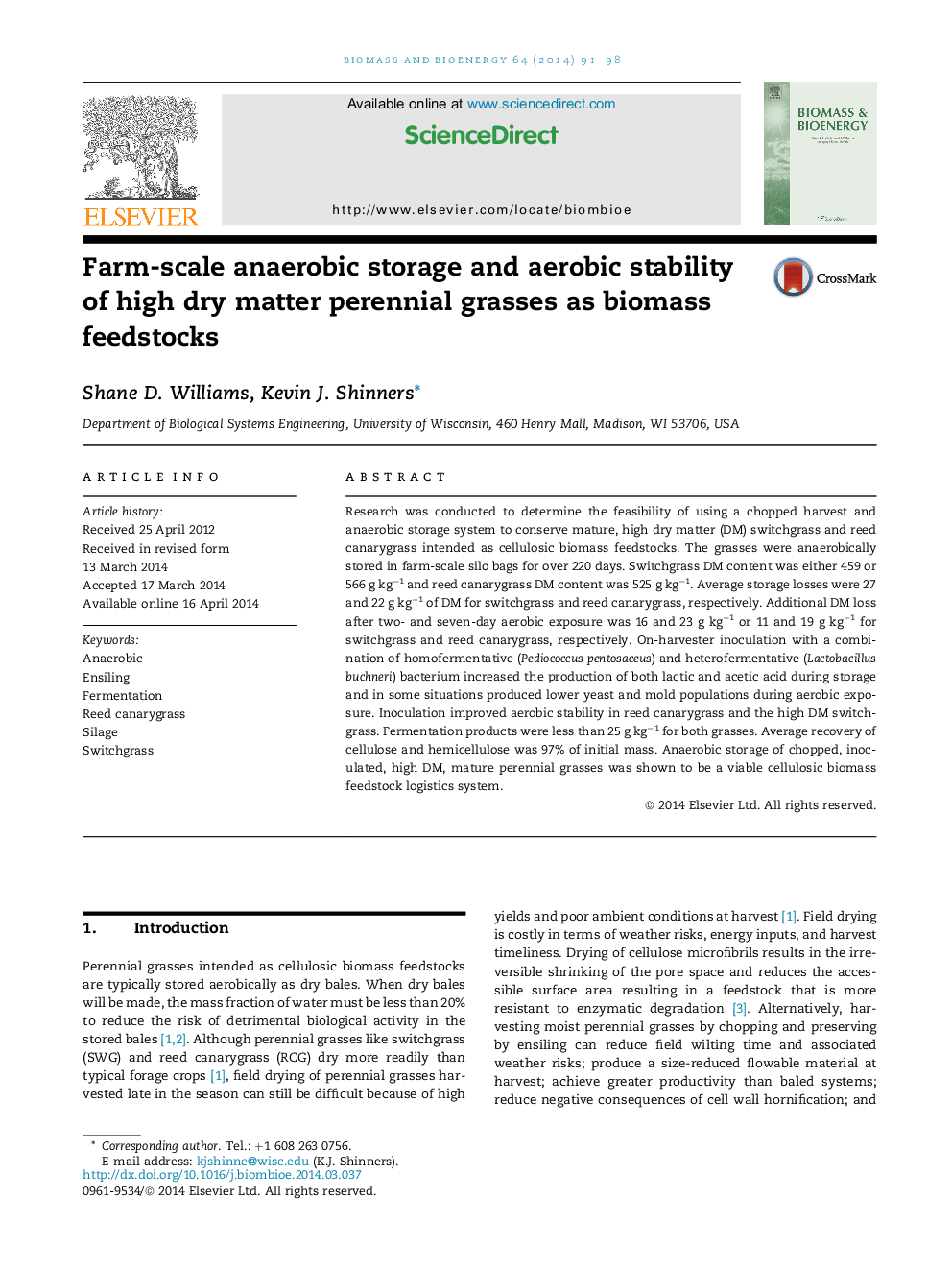| Article ID | Journal | Published Year | Pages | File Type |
|---|---|---|---|---|
| 676877 | Biomass and Bioenergy | 2014 | 8 Pages |
•High dry matter, mature grasses were chopped and ensiled in silo bags.•Storage losses were low and feedstock aerobically stable after removal from storage.•On-harvester bacterial inoculation improved aerobic stability.•Anaerobic storage was shown to be a viable cellulosic biomass feedstock system.
Research was conducted to determine the feasibility of using a chopped harvest and anaerobic storage system to conserve mature, high dry matter (DM) switchgrass and reed canarygrass intended as cellulosic biomass feedstocks. The grasses were anaerobically stored in farm-scale silo bags for over 220 days. Switchgrass DM content was either 459 or 566 g kg−1 and reed canarygrass DM content was 525 g kg−1. Average storage losses were 27 and 22 g kg−1 of DM for switchgrass and reed canarygrass, respectively. Additional DM loss after two- and seven-day aerobic exposure was 16 and 23 g kg−1 or 11 and 19 g kg−1 for switchgrass and reed canarygrass, respectively. On-harvester inoculation with a combination of homofermentative (Pediococcus pentosaceus) and heterofermentative (Lactobacillus buchneri) bacterium increased the production of both lactic and acetic acid during storage and in some situations produced lower yeast and mold populations during aerobic exposure. Inoculation improved aerobic stability in reed canarygrass and the high DM switchgrass. Fermentation products were less than 25 g kg−1 for both grasses. Average recovery of cellulose and hemicellulose was 97% of initial mass. Anaerobic storage of chopped, inoculated, high DM, mature perennial grasses was shown to be a viable cellulosic biomass feedstock logistics system.
